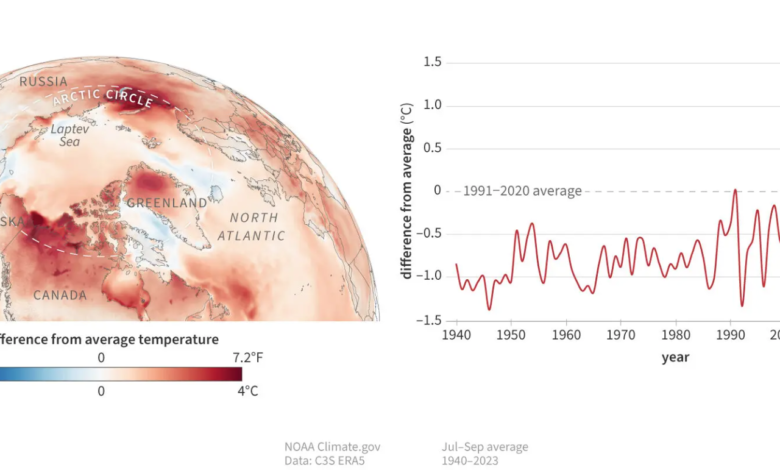All global warming records in the Arctic in 2023

The annual report of Olympic Airlines
– Impacts “unequivocal” and “enhanced by climate change” on people and ecosystems beyond 60,000 latitudes north. Global warming in the Arctic continues to run at twice the rate of the rest of the planet. The events – many of them recorded – that have studied 2023 of the North Pole fuel the alarm for the consequences of global scope that can be triggered. This is stated by the National Oceanic and Atmospheric Administration (NOAA) of the United States in the annual report on climate change in the Arctic.
Global warming in the Arctic: record summer
The summer of 2023 in the Arctic has been the hottest since 1900, while the period between October 2022 and September 2023 (the Arctic year is measured based on the formation and melting cycles of the shell) is positioned at 6° instead of the historical series with a thermal anomaly of +0,77°C compared with the average of the last 30 years. The other seasons, however, have recorded values close to those records, all over the 90 percentile and with extreme values close to +5°C.
The first impact of temperatures much warmer than the surface average reverberates on the top of the water column. And then the melting rate of the shell. In September, when the Arctic summer peak reaches its minimum extent, the ocean area covered by sea ice was the 6th smallest ever. It was also lower than the 2021 and 2022 lows. And it has remained below the 10° percentile of the historical average (from 1979 to today). With over 20% less surface area than the average 1991-2020 extension, 1.21 million km2 of sea ice was missing in September. A figure that prolongs the net trend of the reduction of the polar ice cap, today 43% less than in 1979.
Greenland, for its part, lost 158.7 Gt of frozen mass, in line with the negative trend that has continued since 1998. The greening of the tundra in the Arctic has been the third highest in satellite data in 24 years, with a slight increase compared to 2022. “The Arctic continues an upward trend of shrubs, willows and alders where once there was tundra,” the report says. While the combination of high temperatures and rising sea levels is increasing the melting of permafrost – both land and submarine – with an increase in methane emissions, which is still unknown.





